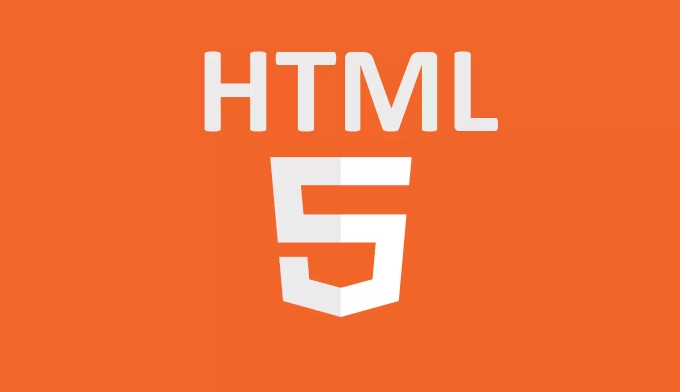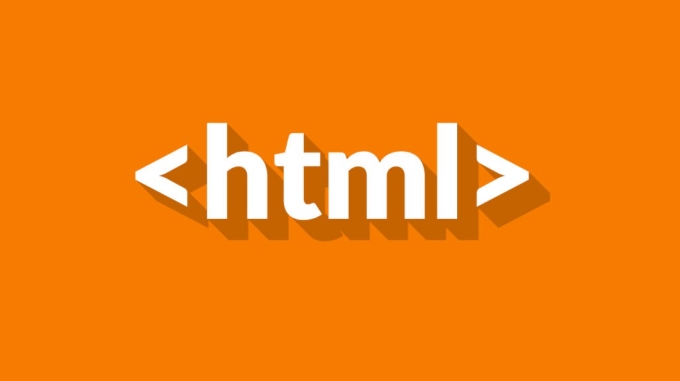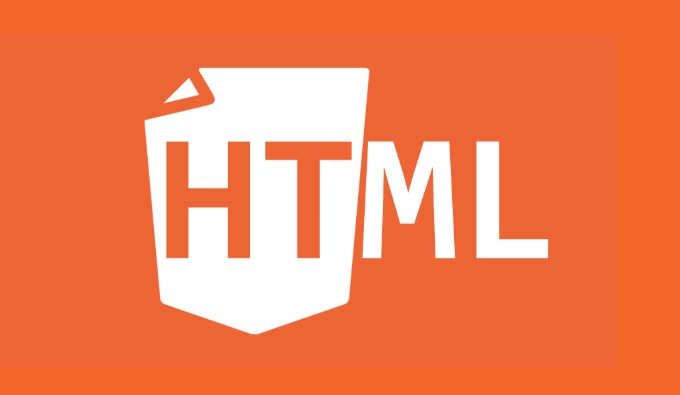Character encodings such as UTF-8 are systems that map characters to numbers for computer storage and display. The problem is that if the browser uses incorrect encoding to parse text, it may lead to garbled code. Character encoding corresponds to a unique number for each character, for example "A" corresponds to 65. Common encodings include UTF-8, ISO-8859-1, and Windows-1252. UTF-8 has become the standard because it is ASCII compatible, supports over one million characters and is efficient. Setting encoding in HTML requires: 1. Add <meta charset="UTF-8"> to
; 2. Use UTF-8 when saving the file; 3. Make sure that the server HTTP header specifies UTF-8. Common problems and solutions include: 1. The text garbled should be checked whether the meta tag is consistent with the file encoding; 2. If a special character error requires confirmation that the form and database are also UTF-8; 3. If an old page error occurs, try to save it in BOM format; 4. The database connection also needs to be used; 5. Check the copy content to avoid non-standard characters and use tools to verify.
HTML character encodings, like UTF-8, are systems that map characters—letters, symbols, emojis, and more—to numbers so computers can store and display them properly. Without the right encoding, browsers might misinterpret text and show weird symbols or scrambled words.

What is a Character Encoding?
Character encoding is a way to translate human-readable characters into bytes that computers understand. Each character gets a unique number. For example, in UTF-8, the letter "A" is represented by the number 65.

Think of it like a dictionary: when a browser reads an HTML file, it uses the encoding to look up what each number means in terms of letters or symbols. If the browser uses the wrong dictionary (encoding), things get mixed up.
Common encodings include:

- UTF-8 – most widely used today, supports almost all characters
- ISO-8859-1 – older standard, limited to Western European characters
- Windows-1252 – similar to ISO but include extra symbols like curly quotes
Why UTF-8 Is the Standard
UTF-8 became the go-to encoding because:
- It's backward compatible with ASCII (the original character set for English)
- It handles over a million characters , covering most languages ??and symbols
- It's efficient – ??common characters like English letters use less data
This flexibility makes UTF-8 ideal for websites that serve global audiences. You'll rarely see issues like “weird question marks” or boxes with UTF-8, as long as it's declared correctly in your HTML.
How to Set Character Encoding in HTML
Setting the correct encoding in HTML is simple, but skipping this step can cause problems. Here's how to do it:
- Always include
<meta charset="UTF-8">inside thesection - Save your HTML file using the same encoding (UTF-8) in your editor
- For server-side settings, make sure HTTP headers also specify UTF-8
Many editors, like VS Code or Sublime Text, let you choose the file encoding when saving. Also, if you're using a CMS or framework, double-check its default settings to avoid mismatches.
Common Issues and Fixes
Even with UTF-8, problems can still pop up:
- Text looks garbled : Check if the HTML meta tag matches the file encoding
- Special characters break : Make sure forms and databases also use UTF-8
- Old pages show squares or question marks : Try re-saving files as UTF-8 without BOM
If you're pulling content from a database, ensure the connection uses UTF-8 too. In PHP, for example, you might need mysqli_set_charset($connection, 'utf8') .
Sometimes even small things like copy-pasting from Word can sneak in non-standard characters. Tools like HTML validators or online encoders can help catch these hidden issues.
Basically that's it.
The above is the detailed content of What are HTML character encodings (like UTF-8)?. For more information, please follow other related articles on the PHP Chinese website!

Hot AI Tools

Undress AI Tool
Undress images for free

Undresser.AI Undress
AI-powered app for creating realistic nude photos

AI Clothes Remover
Online AI tool for removing clothes from photos.

Clothoff.io
AI clothes remover

Video Face Swap
Swap faces in any video effortlessly with our completely free AI face swap tool!

Hot Article

Hot Tools

Notepad++7.3.1
Easy-to-use and free code editor

SublimeText3 Chinese version
Chinese version, very easy to use

Zend Studio 13.0.1
Powerful PHP integrated development environment

Dreamweaver CS6
Visual web development tools

SublimeText3 Mac version
God-level code editing software (SublimeText3)

Hot Topics
 How do I stay up-to-date with the latest HTML standards and best practices?
Jun 20, 2025 am 08:33 AM
How do I stay up-to-date with the latest HTML standards and best practices?
Jun 20, 2025 am 08:33 AM
The key to keep up with HTML standards and best practices is to do it intentionally rather than follow it blindly. First, follow the summary or update logs of official sources such as WHATWG and W3C, understand new tags (such as) and attributes, and use them as references to solve difficult problems; second, subscribe to trusted web development newsletters and blogs, spend 10-15 minutes a week to browse updates, focus on actual use cases rather than just collecting articles; second, use developer tools and linters such as HTMLHint to optimize the code structure through instant feedback; finally, interact with the developer community, share experiences and learn other people's practical skills, so as to continuously improve HTML skills.
 How do I use the element to represent the main content of a document?
Jun 19, 2025 pm 11:09 PM
How do I use the element to represent the main content of a document?
Jun 19, 2025 pm 11:09 PM
The reason for using tags is to improve the semantic structure and accessibility of web pages, make it easier for screen readers and search engines to understand page content, and allow users to quickly jump to core content. Here are the key points: 1. Each page should contain only one element; 2. It should not include content that is repeated across pages (such as sidebars or footers); 3. It can be used in conjunction with ARIA properties to enhance accessibility. Usually located after and before, it is used to wrap unique page content, such as articles, forms or product details, and should be avoided in, or in; to improve accessibility, aria-labeledby or aria-label can be used to clearly identify parts.
 How do I create a basic HTML document?
Jun 19, 2025 pm 11:01 PM
How do I create a basic HTML document?
Jun 19, 2025 pm 11:01 PM
To create a basic HTML document, you first need to understand its basic structure and write code in a standard format. 1. Use the declaration document type at the beginning; 2. Use the tag to wrap the entire content; 3. Include and two main parts in it, which are used to store metadata such as titles, style sheet links, etc., and include user-visible content such as titles, paragraphs, pictures and links; 4. Save the file in .html format and open the viewing effect in the browser; 5. Then you can gradually add more elements to enrich the page content. Follow these steps to quickly build a basic web page.
 How do I create checkboxes in HTML using the element?
Jun 19, 2025 pm 11:41 PM
How do I create checkboxes in HTML using the element?
Jun 19, 2025 pm 11:41 PM
To create an HTML checkbox, use the type attribute to set the element of the checkbox. 1. The basic structure includes id, name and label tags to ensure that clicking text can switch options; 2. Multiple related check boxes should use the same name but different values, and wrap them with fieldset to improve accessibility; 3. Hide native controls when customizing styles and use CSS to design alternative elements while maintaining the complete functions; 4. Ensure availability, pair labels, support keyboard navigation, and avoid relying on only visual prompts. The above steps can help developers correctly implement checkbox components that have both functional and aesthetics.
 How do I minimize the size of HTML files?
Jun 24, 2025 am 12:53 AM
How do I minimize the size of HTML files?
Jun 24, 2025 am 12:53 AM
To reduce the size of HTML files, you need to clean up redundant code, compress content, and optimize structure. 1. Delete unused tags, comments and extra blanks to reduce volume; 2. Move inline CSS and JavaScript to external files and merge multiple scripts or style blocks; 3. Simplify label syntax without affecting parsing, such as omitting optional closed tags or using short attributes; 4. After cleaning, enable server-side compression technologies such as Gzip or Brotli to further reduce the transmission volume. These steps can significantly improve page loading performance without sacrificing functionality.
 How do I use the element to represent the footer of a document or section?
Jun 25, 2025 am 12:57 AM
How do I use the element to represent the footer of a document or section?
Jun 25, 2025 am 12:57 AM
It is a semantic tag used in HTML5 to define the bottom of the page or content block, usually including copyright information, contact information or navigation links; it can be placed at the bottom of the page or nested in, etc. tags as the end of the block; when using it, you should pay attention to avoid repeated abuse and irrelevant content.
 How has HTML evolved over time, and what are the key milestones in its history?
Jun 24, 2025 am 12:54 AM
How has HTML evolved over time, and what are the key milestones in its history?
Jun 24, 2025 am 12:54 AM
HTMLhasevolvedsignificantlysinceitscreationtomeetthegrowingdemandsofwebdevelopersandusers.Initiallyasimplemarkuplanguageforsharingdocuments,ithasundergonemajorupdates,includingHTML2.0,whichintroducedforms;HTML3.x,whichaddedvisualenhancementsandlayout
 How do I embed video in HTML using the element?
Jun 20, 2025 am 10:09 AM
How do I embed video in HTML using the element?
Jun 20, 2025 am 10:09 AM
To embed videos in HTML, use tags and specify the video source and attributes. 1. Use src attributes or elements to define the video path and format; 2. Add basic attributes such as controls, width, height; 3. To be compatible with different browsers, you can list MP4, WebM, Ogg and other formats; 4. Use controls, autoplay, muted, loop, preload and other attributes to control the playback behavior; 5. Use CSS to realize responsive layout to ensure that it is adapted to different screens. Correct combination of structure and attributes can ensure good display and functional support of the video.






